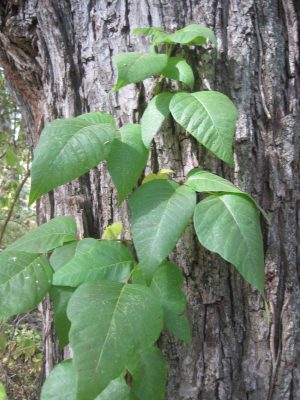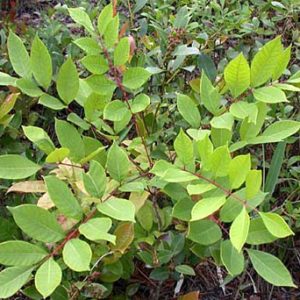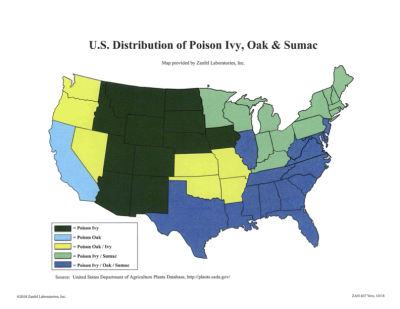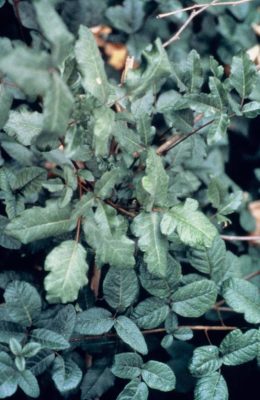
Poison Ivy, Oak, and Sumac Rash Facts
There are many questions not only about the plants which have urushiol oil but also about the rash itself. We answer a few of those questions here as well as discuss some of the more popular myths.
The itching, redness, and swelling associated with contact with poison ivy is due to the body’s response to the oil, urushiol. This oil is by itself somewhat harmless, but the human body responds in such a way as to attack your skin in which the urushiol is bound. This attack upon your skin is what causes the itching, swelling, and redness.
Approximately 85 percent of the population will develop an allergic reaction if exposed to poison ivy, oak, or sumac, according to the American Academy of Dermatology (For more information about poison ivy and contact dermatitis, visit the American Academy of Dermatology at www.aad.org). Nearly one-third of forestry workers and firefighters who battle forest fires in California, Oregon and Washington develop rashes or lung irritations from contact with poison oak, which is the most common of the three in those states.
Urushiol must penetrate the skin to cause a reaction. Places where the skin is thick, such as the soles of the feet and the palms of the hands, are less sensitive to the sap than areas where the skin is thinner. The severity of the reaction may also depend upon the extent of urushiol exposure.
Urushiol is pervasive. Although it can only bind to humans, it can get on your pets, tools, gloves, clothing, shoes, and bedding — and contaminate you upon contact. Any soap and water will wash urushiol away from non-human surfaces. Clean any outdoor tools that may have contacted the plants. Wash the clothes and gloves that you wore when exposed. If you sat down or went to bed without washing yourself or your clothes beforehand, clean all bedding and upholstery that you may have had contact with prior to washing. Wash your pets. Remember that urushiol can remain toxic for one year or more.

Poison ivy is the most common and widespread plant of the three. It is characterized by its leaves, which have three pointed leaflets. Its leaves assume bright colors in the fall, turning yellow and then red. Poison ivy grows as a vine or free-standing plant in the East, Midwest, and South and as a shrub in the far northern and western United States, including the Great Lakes and Canada.

Poison sumac has seven to 13 staggered leaflets with one on the tip of the plant and grows as a shrub or small tree. It is found mainly in the eastern United States, growing in peat bogs and swamps. Poison sumac is distinguished from nonpoisonous sumac by the location and color of its fruit, which is white, and grows between the leaf and the branch.
Poison Ivy, Oak and Sumac Myths
There are many myths surrounding the rash from poison ivy. Click to read the fact associated with each myth.
Fact: The fluid in the blisters will not spread the rash. Before blisters form, the rash can only be spread by unbound urushiol. Avoid scratching of blisters. Fingernails may carry bacteria that could cause an infection.
Fact: The rash is a reaction to urushiol. The rash cannot pass from person to person after the urushiol binds to the skin.
Fact: Although not everyone reacts to poison ivy upon first or subsequent exposures, people generally become more sensitized with each contact and may react more severely to subsequent exposures. In addition, the reaction may last longer.
Fact: A person’s sensitivity changes over time, even from season to season. People who were sensitive to poison ivy as children may not be allergic as adults.
Fact: Urushiol remains active for up to five years. Never handle dead plants that look like poison ivy without proper protection.


